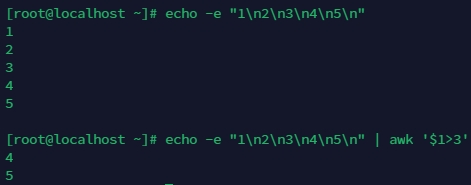Command 的子部分
Git
Init global config
git config --global user.name "AaronYang"
git config --global user.email aaron19940628@gmail.com
git config --global pager.branch false
git config --global pull.ff only
git --no-pager diffGet specific file from remote
git archive --remote=git@github.com:<$user>/<$repo>.git <$branch>:<$source_file_path> -o <$target_source_path>Clone specific branch
git clone --single-branch --branch v2.4.0 https://github.com/kubernetes-sigs/sig-storage-local-static-provisioner.gitLinux
telnet
a command line interface for communication with a remote device or serve
telnet <$ip> <$port>lsof (list as open files)
everything is a file
lsof <$option:value>awk (Aho, Weinberger, and Kernighan [Names])
awk is a scripting language used for manipulating data and generating reports.
# awk [params] 'script'
awk <$params> <$string_content>ss (socket statistics)
view detailed information about your system’s network connections, including TCP/IP, UDP, and Unix domain sockets
# awk [params] 'script' var=value file(s)
awk <$params> -f scriptfile var=value file(s)clean files 3 days ago
find /aaa/bbb/ccc/*.gz -mtime +3 -exec rm {} \;ssh without affect $HOME/.ssh/known_hosts
ssh -o "UserKnownHostsFile /dev/null" root@aaa.domain.com
ssh -o "UserKnownHostsFile /dev/null" -o "StrictHostKeyChecking=no" root@aaa.domain.comsync clock
[yum|dnf] install -y chrony \
&& systemctl enable chronyd \
&& (systemctl is-active chronyd || systemctl start chronyd) \
&& chronyc sources \
&& chronyc tracking \
&& timedatectl set-timezone 'Asia/Shanghai'set hostname
hostnamectl set-hostname developadd remote key
ssh -o "UserKnownHostsFile /dev/null" \
root@aaa.bbb.ccc \
"mkdir -p /root/.ssh && chmod 700 /root/.ssh && echo '$SOME_PUBLIC_KEY' \
>> /root/.ssh/authorized_keys && chmod 600 /root/.ssh/authorized_keys"set -x
This will print each command to the standard error before executing it, which is useful for debugging scripts.
set -xsed (Stream Editor)
sed <$option> <$file_path>fdisk
list all disk
fdisk -lcreate CFS file system
Use mkfs.xfs command to create xfs file system and internal log on the same disk, example is shown below:
mkfs.xfs <$path>modprobe
program to add and remove modules from the Linux Kernel
modprobe nfs && modprobe nfsdMaven
1. build from submodule
You dont need to build from the head of project.
./mvnw clean package -DskipTests -rf :<$submodule-name>you can find the <$submodule-name> from submodule ’s pom.xml
<project xmlns="http://maven.apache.org/POM/4.0.0" xmlns:xsi="http://www.w3.org/2001/XMLSchema-instance"
xsi:schemaLocation="http://maven.apache.org/POM/4.0.0 http://maven.apache.org/maven-v4_0_0.xsd">
<modelVersion>4.0.0</modelVersion>
<parent>
<groupId>org.apache.flink</groupId>
<artifactId>flink-formats</artifactId>
<version>1.20-SNAPSHOT</version>
</parent>
<artifactId>flink-avro</artifactId>
<name>Flink : Formats : Avro</name>Then you can modify the command as
./mvnw clean package -DskipTests -rf :flink-avro2. skip some other test
For example, you can skip RAT test by doing this:
./mvnw clean package -DskipTests '-Drat.skip=true'Gradle
1. spotless
keep your code spotless, check more detail in https://github.com/diffplug/spotless
And the, you can execute follwoing command to format your code.
./gradlew spotlessApply./mvnw spotless:apply2. shadowJar
shadowjar could combine a project’s dependency classes and resources into a single jar. check https://imperceptiblethoughts.com/shadow/
./gradlew shadowJar3. check dependency
list your project’s dependencies in tree view
./gradlew dependencies --configuration compileClasspath./gradlew :<$module_name>:dependencies --configuration compileClasspath